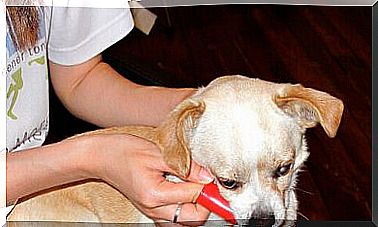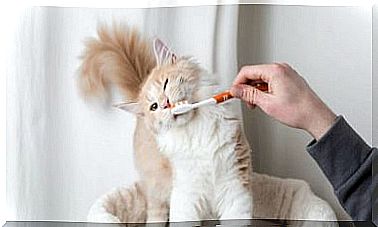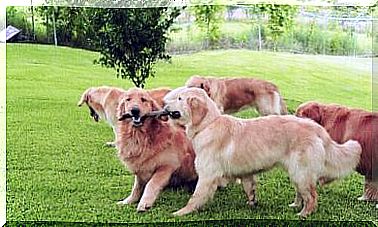What If My Dog has Had An Accident?
An accident, a bruise, wounds and even fractures — danger is lurking. A simple walk can expose our dogs to situations where an accident can happen. As we take the animal to the vet, it’s important to know how to act in an emergency to save our four-legged friend’s life.
In the first few moments after an accident, it is very important to lay the animal on its right side and cover it with a blanket. A very strong blow represents a great danger to the dog’s life.
If he is unconscious, the neck should remain straight for easier breathing. Next, we’ll open your mouth, trying to pull your tongue out to clear the air passage.
How to tell if the dog is breathing? We will observe if the animal’s chest rises and falls. If we need to measure the pulse, we’ll do it on the inside of the hind legs. It is good to remember that the normal number of heartbeats for a dog weighing up to 13kg is between 100 and 160 beats per minute.
To measure the dog’s pulse, simply count the number of beats per 15 seconds and multiply by four to get the number of total beats per minute. To make sure the count is correct, just repeat the procedure.
Transporting the injured animal to the veterinary clinic is very delicate, as it can be uncomfortable and painful for him. It is recommended to cover the dog with a blanket while moving. If transporting by car, it is not a good idea to take it on the floor of the vehicle, as braking could increase damage and discomfort.
Wounds, hemorrhages, fractures…
- In case of bleeding, the blood flow must be stopped immediately. For this, we will apply a moistened compress to the cut. After stopping the bleeding, we will cut the hair around the wound to clean it, speeding up healing. We will then immediately go to the vet.
- If the wound was caused by a bite from another dog, in addition to cutting the fur around the wound, we will carefully clean the infected area. For this, we will use warm water and a mild antiseptic. If the lesion is deep, it will be necessary to go to the vet urgently.
- If the dog has broken a bone, it is very important to act with care and without sudden movements. We can try to immobilize the injured region (if we have knowledge of first aid) using a bow, magazine, pieces of cloth, etc. If you don’t know how to act, it’s important not to manipulate the affected region so as not to worsen the injury.
- Drowning. If the animal has symptoms of drowning or suffocation after falling into the water, the correct way to carry it is by lifting it by its hind legs. That way we’ll get all the fluid out of his lungs. If he doesn’t breathe, we will rhythmically press both sides of his chest to revive him. A handy but practical trick is to close the dog’s mouth tightly and blow a tube-shaped hand into its nostrils with your other hand.
In case of poisoning
Poisoning and poisoning are another risk that dogs are exposed to during outdoor walks. The most obvious signs of a poisoning are vomiting, nausea and seizures. The animal may also have foam in its mouth.
The first thing to do is to identify the substance and keep a sample that we will take to the veterinarian. It is also important to make the animal drink a little milk or water to be able to dilute the poison in its body.
If the toxic substance came into contact with the dog’s skin, it is necessary to wash the area with plenty of water so that, if the animal licks it, it does not ingest the poison. If necessary, we will cut the hair of the region.
eye hazards
Along the way, many dangers can appear to our furry friend, from grains of sand to sharp-tipped tree branches. If the animal’s eyeball is injured and the eyelid is closed, we should not force it to open it.
The first aid kit in case of accidents
Do not miss gloves, scissors, iodine, bandages, adhesive tape, clinical thermometer, cotton, hydrogen peroxide, alcohol, gauze, etc. in the kit you have at home.








